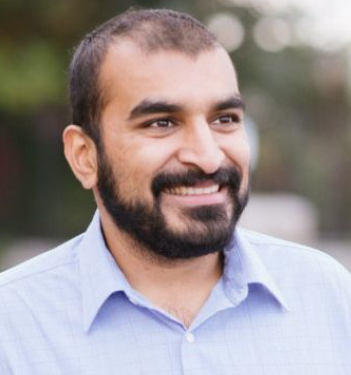Aankit Patel, Director of STEM Education Programs, The City University of New York
 In-service teacher professional development is the lever most state and local initiatives are using to expand computing—computer science and computational thinking—instruction to all students. This is the case with the 10 year, $81 million public-private Computer Science for All (CS4All) initiative I helped lead during my time at the New York City Department of Education (NYCDOE). Over the course of the first 5 years, we trained over 2,000 K-12 teachers from a variety of backgrounds. The long-term sustainability of this work, its short-term efficacy, and its impact on students is being evaluated by multiple research teams. The answers will be complex and there is much to be learned by this initiative. As a district administrator, one of the most important things I learned was that working with teachers in an iterative, collaborative inquiry into their problems of practice built a trusted community of practice that could support new and veteran teachers sustainably over time.
In-service teacher professional development is the lever most state and local initiatives are using to expand computing—computer science and computational thinking—instruction to all students. This is the case with the 10 year, $81 million public-private Computer Science for All (CS4All) initiative I helped lead during my time at the New York City Department of Education (NYCDOE). Over the course of the first 5 years, we trained over 2,000 K-12 teachers from a variety of backgrounds. The long-term sustainability of this work, its short-term efficacy, and its impact on students is being evaluated by multiple research teams. The answers will be complex and there is much to be learned by this initiative. As a district administrator, one of the most important things I learned was that working with teachers in an iterative, collaborative inquiry into their problems of practice built a trusted community of practice that could support new and veteran teachers sustainably over time.
When building the NYC CS4All Blueprint, I ran over 30 sessions with pioneering CS teachers and community-based organizations to gather, categorize, and prioritize practical challenges, learning objectives, and important artifacts. The artifacts of this work and the questions raised led to a 100kin10-grant-funded project that involved teachers visiting each others’ classrooms to identify useful practices to capture with video. Those videos are on the Blueprint, and teachers use them to help expand CS instruction at their school, and PD facilitators use them with teachers to spark fresh inquiries into CS pedagogies.
When planning professional development (PD) sessions with the NSF-funded Beauty and Joy of Computing team that included Education Development Center and University of California, Berkeley, we incorporated teachers into the design of training by asking them to run breakout sessions. Teachers that ran great breakouts were then invited to deliver full PD sessions for new teachers and eventually to develop and design that content. This model was replicated across all middle and high school PD—almost 200 teachers annually were engaged in this way. Based on the effectiveness of teachers training teachers, we further extended this model to empower teachers to lead the expansion of CS instruction at their schools by giving them control over a small budget. The constraints at the school level led us to open up how that budget could be deployed from just training teachers themselves to sending them to approved trainings, building interest through exposure events, or planning ahead with their administrators.
In both of these examples teachers identified and prioritized their problems of practice through design thinking, discussed their experiences, and collaborated with each other, support staff, or researchers to develop and test out interventions. Teachers raised common, complex problems like:
- How might I give my students means to engage with content on their terms or in their language, representations of content that makes sense to them, and ways to express their understanding to me and others?
- How might I assess students in a way that maps to rigorous standards? What are the standards and what do they mean?
- How do I manage a room of 30+ kids actively working on labs or projects? How might I manage and assess groups of kids collaborating on these labs or projects?
- How might I use technology before, during, or after class to improve, organize, and enhance my instruction?
- How do I get my administrator to understand why students are talking and moving around in my STEM class? How do I get them to fairly evaluate my instruction and support me in growing this work?
NYC has over 1800 schools with a large degree of local control, so each teacher had a different spin on these problems. The complexity and number of problems of practice necessitated an approach that engaged teachers as collaborators, leaders, and co-constructors of knowledge and interventions. The elementary, middle, and high school teachers that were first engaged in this way continue to iterate on their own work—some with the CS4All team, some with teams they’ve built at their schools or in their districts, and others with researchers, higher education faculty, and community-based organizations. Physically the community exists at CS4All and other STEM professional developments, in school and district meetings, at teacher meetups, and online on the Blueprint and a citywide Slack channel. Personally, I have moved to the City University of New York (CUNY) to facilitate the development of pre-service computing education programs and to help bring more higher education faculty into this community. As new teachers, researchers, and organizations seek to work on computing education in NYC, this community is serving as a source of technical, pedagogical, and content knowledge and a place to find trusted collaborators to help grapple with the complexities of educational change.
---
Any opinions, findings, and conclusions or recommendations expressed are those of the author(s) and do not necessarily reflect the views of the National Science Foundation.